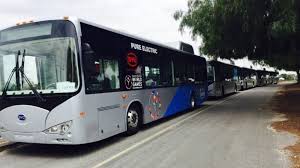Wireless Charging Road for Electric Buses new technology
The technology behind the wireless charge or inductive load was discovered by Nikola Tesla in the 1890s and uses an electromagnetic field to transfer energy between two objects. In chargers, an induction coil is used to create an electromagnetic field, while a second induction coil in the charging device is used to take the field energy created and convert back into an electric current that charges the battery. All sounds relatively simple, but the inductive load has been difficult to implement, especially with larger objects, moving objects and objects that are farther away from the loader. These limitations would make urban buses, for example, unlikely candidates to use the technology.
However, an Israeli company called ElectRoad announced that it has been developing a new technology (Dynamic Wireless Power Transfer - DWPT) that can drive a vehicle in motion without cables from the road. The results of the first tests were good enough to win the company a $ 120,000 grant from the Israeli Ministry of Transport and Road Safety to equip a half-mile long bus route in Tel Aviv by 2018. If the project is Well, the government plans to cover the entire 11-mile highway between Eilat City and Ramon International Airport, reports Scientific American.
Recent improvements in car batteries can make wireless freight roads redundant for individual cars, but may still be necessary for public transportation. The main challenge with electric buses is that the batteries need to be very large to overcome the limitation of the energy storage capacity. Batteries typically weigh 1/3 of the vehicle, thus reducing potential space usage and energy efficiency. They are also very expensive and need to be replaced every few years, which reduces incentives for municipalities to improve their fleets.
The technology developed by ElectRoad will allow EVs to use very small and low-cost batteries that are only needed for acceleration and small sections of road not equipped with the technology. The batteries will be used about 6 percent of the time the vehicle is running and thus could last up to 25 years. The additional advantages are the reduction of vehicle weight and energy use, as well as the lack of emissions and the need for charging.
The system of wireless freeways also has disadvantages, the main one being the interruption caused by the need to retrofit the roads. ElectRoad claims, however, that it can equip one kilometer of road in a single night, as demonstrated in the video below.
In the long term, ElectRoad envisages a complete urban infrastructure that allows all public transport to function efficiently in electricity. Easy adjustments to electric cars will also allow them to take advantage of new roads. Additional capabilities could also include power distribution planning, payment control, and even energy sharing between vehicles
In the near future, electric vehicles, especially public transport buses, could be charged while driving, which could eliminate the need for larger batteries and more charging stations if ElectRoad's work is expanded and marketed. This Israeli launch has developed a wireless charging system that can be installed only 8 centimeters under existing highways, which can automatically charge electric vehicles equipped with an accompanying system simply by driving on the electric road.
ElectRoad is still at an early stage, although the company's dynamic wireless power transfer system (DWPT) has been tested on a small scale in a road section in Tel Aviv, where it has been used to power a city electric bus, Which has allowed the company to test the system performance and durability "in real conditions of the city." It is said that this wireless electric road charging technology is quite quick to install, with one kilometer of road capable of being upgraded to the DWPT system "in half a day".
The main objective of ElectRoad is the charging of electric public transport solutions, and the company claims that its wireless charging roads can allow buses to use smaller batteries, which reduces the weight and total cost of electric buses, increasing Radically its reach. According to the company, its system has a load efficiency of more than 88%, and although ElectRoad is certainly not the first, nor the only company working on recharging wireless vehicles, CEO Oren Ezer says that Its technology is different from others who work in space.





Comments
Post a Comment